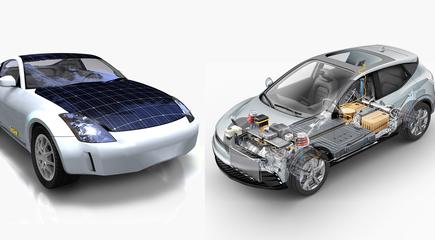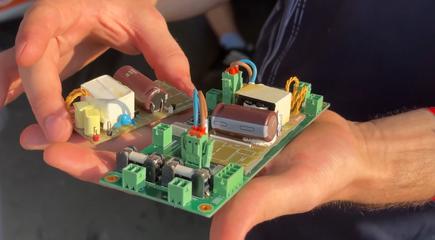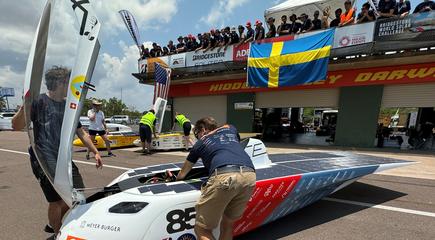Can You Really Use Solar Panels for a Passenger Car?
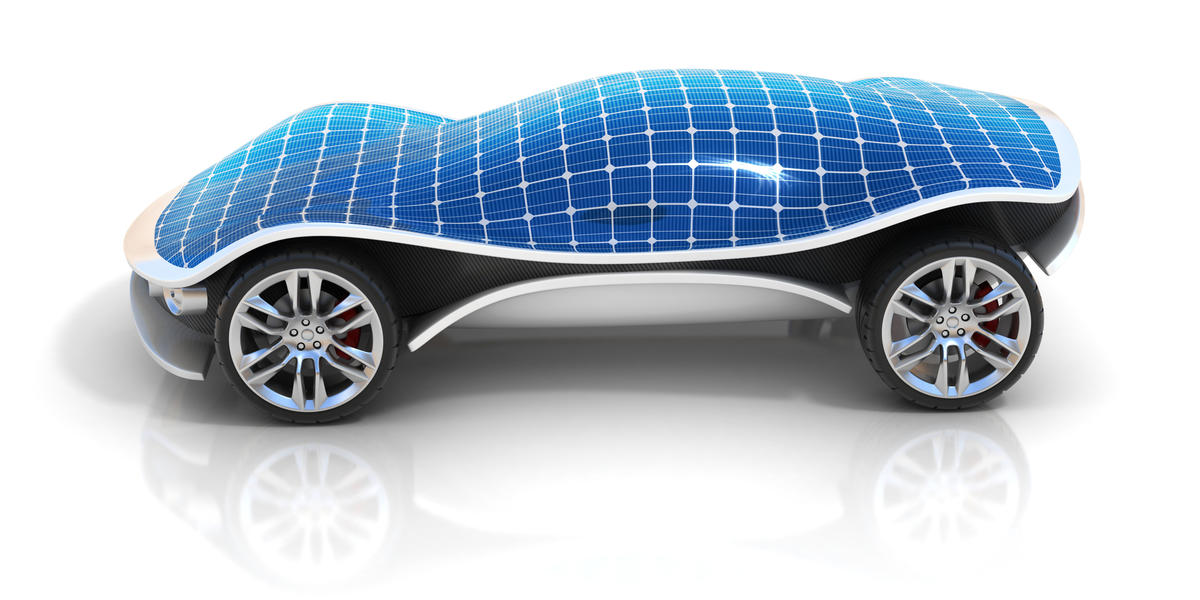
At the Bridgestone World Solar Challenge, the “Challenger” class cars that set the speed records run entirely off sun power over the full length of the 3,000 km course. But what happens if you try to use those solar cells to power a production EV car? Is it possible or even practical? Is the array on the αCentauri car, Aletsch, big enough? Or, how big would it need to be to power an EV?
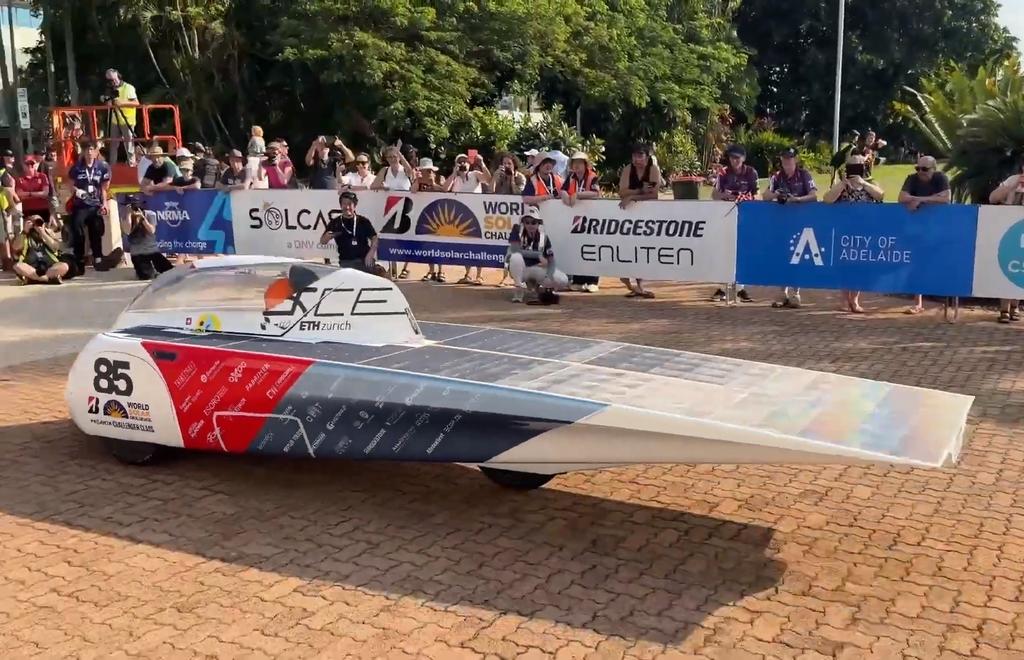
According to Bridgestone World Solar Challenge 2023 regulations, the permissible size of solar array is 4 square meters. In real-world conditions, typical power output for a solar panel may be 200 to 300 Watts per square meter. So, for this discussion, let’s assume 4 m^2 * 300 Watts = 1200 Watts total output power for the Bridgestone World Solar Challenge solar cars.
And the power draw for an EV may be 245 Wh / mile in good conditions at highway speeds. 245 Wh / mile * 60 mile / h = 14.7 kW power, for example. So the Bridgestone World Solar Challenge car panels are capable of just 1200 W / 14700 W = 8% of the power needed at highways speeds.
But since we don’t need to comply with the Bridgestone World Solar Challenge 4 square meter regulation, we can “right size” the solar array to meet the power demand. The solar array needed to power the Tesla at highway speeds would be 14700 W / 1200 W * 4 m^2 = 49 square meters! That’s a sail on a ship, not the surface of a passenger vehicle!
I spoke with Aaron Griesser from the αCentauri team for his thoughts on using solar for production cars. He said he was, “Not 100 percent sure, in general it may be a nice bit of additional energy [for a production car].
At the moment, the electronics and work are too expensive. It’s easier to put them on the parking roof, with a fixed install where you can gain the most power. You are wasting a lot of the power you could get out of the cells when you build a solar car, because there are always shadows and non-optimal placement of the cells. You accept that you won’t have full performance of the array going down the road.”
Griesser’s thoughts are very much on point – solar cells are more practical for charging EVs. For the average 41 mile American commute to and from work in an EV, we’d need 245 Wh / mi * 41 miles = 10 kWh.
Over the course of an 8-hour workday or night of sleep, the car can be fully recharged on a 1.25 kW circuit, or roughly 4 m^2 of solar panels. That is the Bridgestone World Solar Challenge regulation panel size…and smaller than a typical car parking spot.
Mr. Green’s Blog is on location cheering for the αCentauri Solar Race Team. Follow #PowiGaNVan on Power Integrations’ official YouTube Channel and LinkedIn Page.
This Mr. Green blog is part of a special series of blogs, vlogs, livestreams and social posts from the #PowiGaNVan as we follow Team αCentauri through the Australian Outback for the Bridgestone World Solar Challenge.




